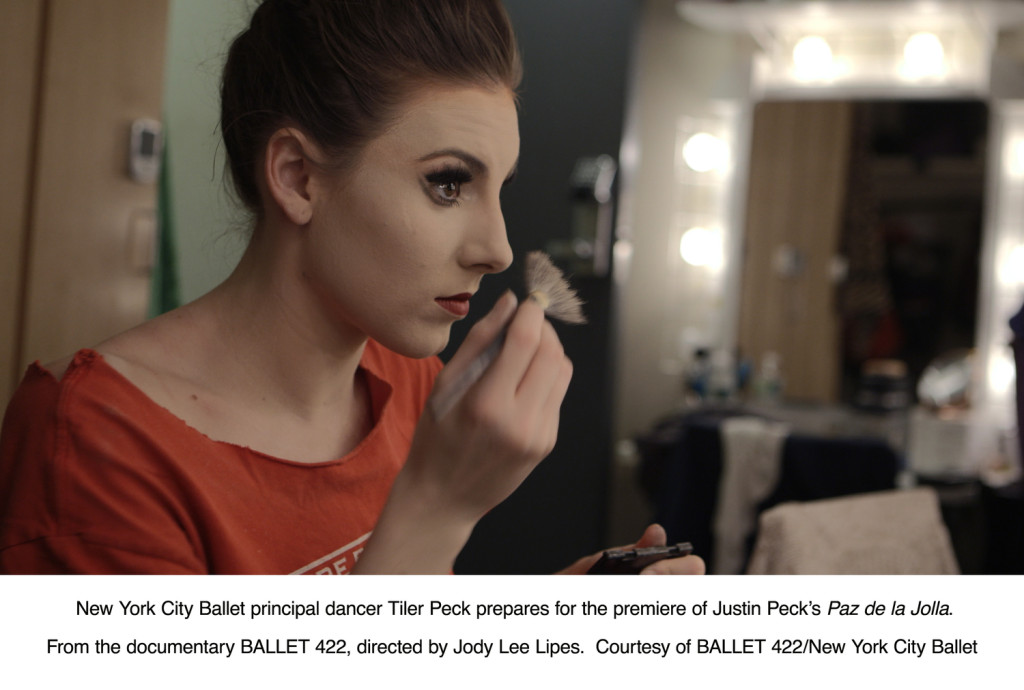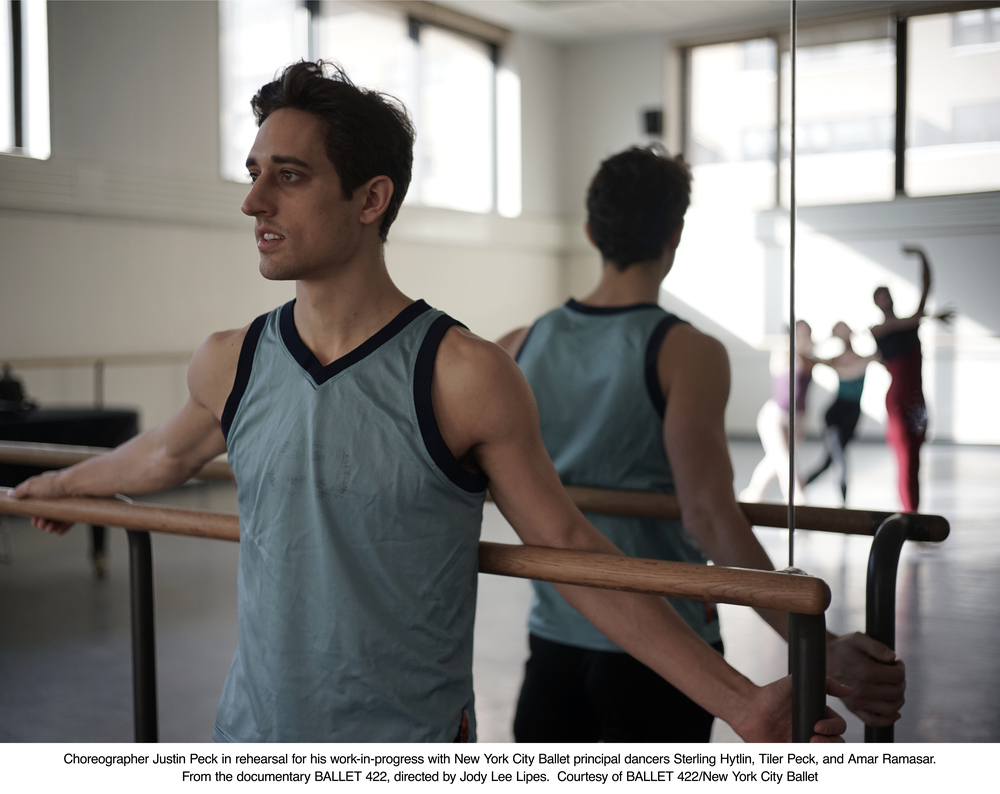By: Gesilayefa Azorbo
Ballet 422, the much-anticipated new film from Jody Lee Lipes (NY Export: Opus Jazz), opens with a couple of facts. 91 – the number of full-time dancers at the prestigious New York City Ballet. 1948 – the year the ballet company was formed.
The film then opens with a shot of these elite dancers walking down a darkened hallway to a mirrored practice studio. Then, shots of them stretching, warming up, wrapping their feet in tape, and other preparations that go into the dancer’s life. The camera’s focus is soon drawn to a particular dancer, a dark haired young man with a serious expression. This is Justin Peck, a member of the New York City Ballet’s 50-person Corps de Ballet.
After a number of quick shots contextualizing Peck within a performance of another production at the Company, another set of intertitles reveals that not only is Peck a dancer, he’s also a graduate of the Company’s choreographic institute, and at the age of 25, has become the only current dancer to also choreograph for the New York City Ballet.
He has been given the task of choreographing the sole new production in the Company’s 2013 Winter Season. The title of the film refers to the fact that his piece, set to a composition from 1935 and featuring three of the company’s principal dancers, is the 422nd in the company’s history. When he begins, he has less than two months to create the new piece.
What follows is evidence of astonishingly intimate access to a process that is usually undertaken out of the sight and judgement of the public, only to be unveiled in its perfection on opening night. Here, the audience is invited in to see the process unfold, from conception to delivery. The film offers close examination of the gruelling process, including a compelling early shot of Peck recording his initial dance ideas on an iPhone perched on the side of a table. This is followed by shots of him with his chosen dancers as he explains his ideas, often physically, while they practice in scenes that capture the rapport and respect that the dancers and choreographers have for each other within their mutual love of the art and craft of dance.
Shot in the direct cinema tradition of unobtrusive observation, Peck and other dancers, choreographers and musicians that show up throughout the film seem unaware of the ever-present cameras. The viewer gets a sense of being part of the action, seeing the early starts and stops, the ideas developed and discarded. The only evidence that this is a film and you haven’t, in fact, been granted access to the opaque inner workings of the ballet, is the occasional presence of a cameraperson reflected in the ubiquitous mirrors in the practice studios.
In evenly paced scene changes, we move from the practice studios to the stage at the ballet as decisions are made about the technical side of the production. We begin to understand that aside from the choreography itself, Peck is also involved in the decision-making around the lighting, the sound design, and all the other production cues that make the ballet a seamless experience for the audience.
The viewer gets to see the conductor practicing with the orchestra, the costume designers consulting with each other and with Peck about the fabric choices, and the lighting designers discussing ways to use the lights to shift and flow with the mood of the piece.
Two months of preparation and shaping of a new ballet are cut down into a neat, 72-minute package, each segment separated by intertitles that mark the countdown to the premiere. There is no overt narration in this feature, nor are there one-on-one interviews, but the intertitles, and the immersive shooting action, serve to alert the viewer to the rising stakes as things get closer and closer to the launch of the brand new ballet.
As a main character, Peck appears focused and professional in most scenes, the camera often showing his serious expression behind a pair of glasses as he consults with his team or directs his dancers, but you still get a sense that he is acutely aware of just how much is riding on his ability to pull off the creation of a brand new production New York City Ballet.
The word unprecedented is thrown around a lot, but in the case of this film, it is perfectly suitable description. This is a film that quietly but fully immerses you in a process and a world that’s often misunderstood by anyone who isn’t involved in the dance world on a daily basis. Rather than getting the characters to tell you, the viewer everything that’s going on, Ballet 422 allows you to draw your own conclusions based on comprehensive and very fascinating behind-the-scenes footage of a fascinating and engaging process.
If you’ve ever fantasized about choreographing a major dance production, consider this film an essential primer.





Be the first to comment